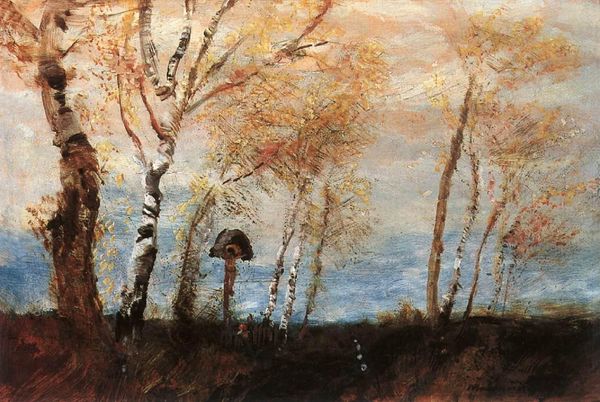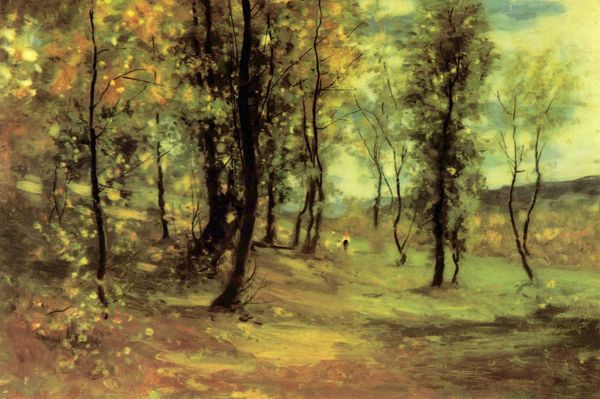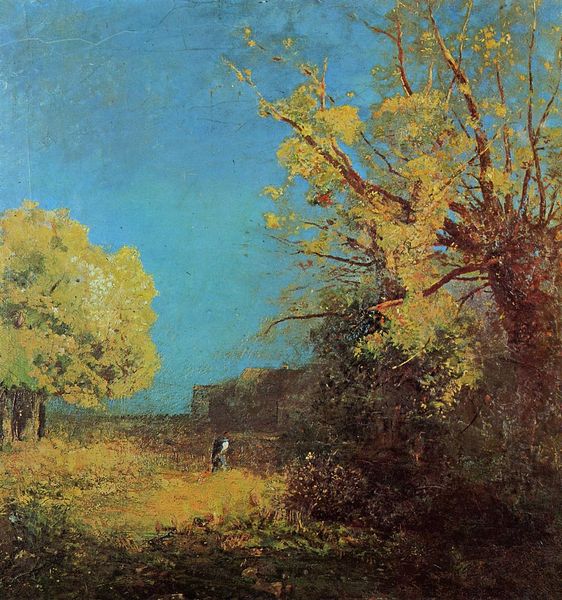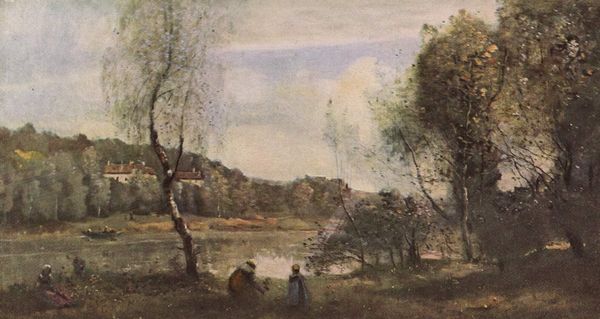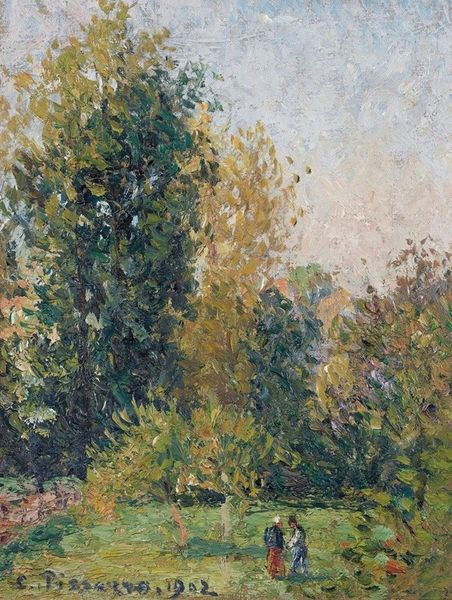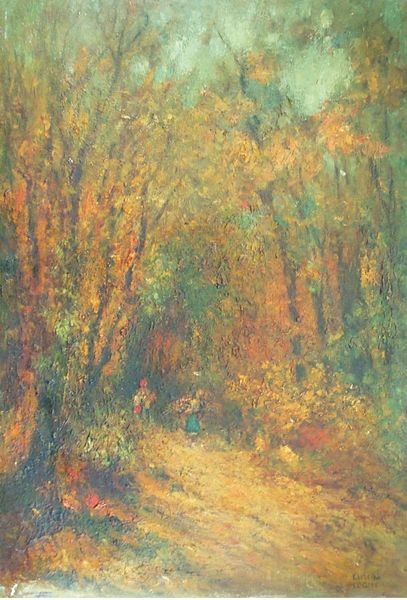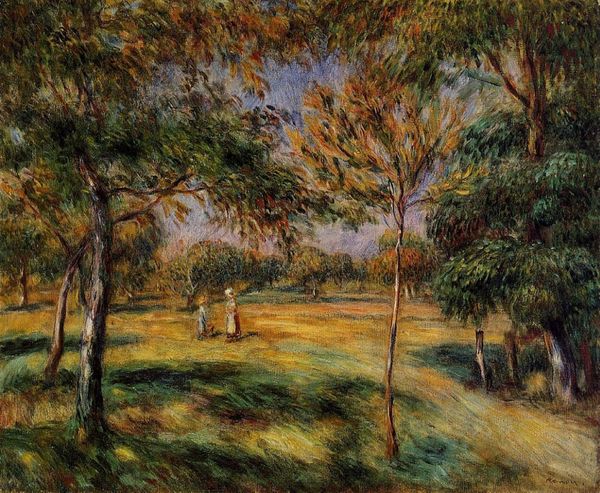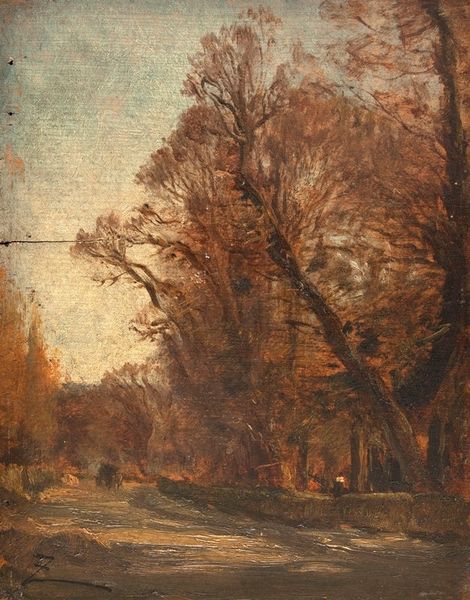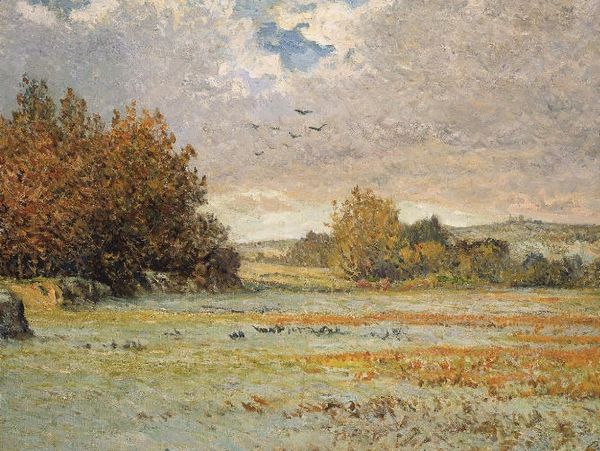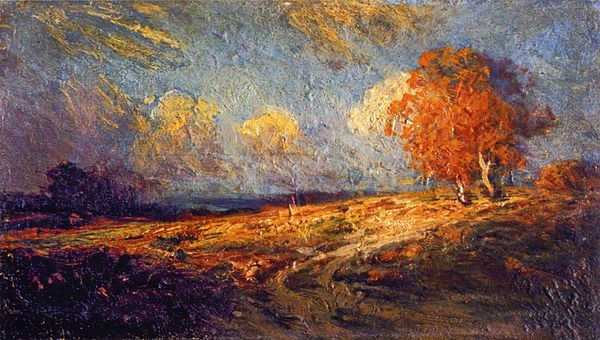
painting, plein-air, oil-paint
#
tree
#
garden
#
painting
#
plein-air
#
oil-paint
#
landscape
#
figuration
#
oil painting
#
post-impressionism
Copyright: Public domain
Editor: Here we have Van Gogh’s “The Parsonage Garden at Nuenen with Pond and Figures,” painted in 1885 using oil paint. The earth tones and visible brushstrokes make me feel like I'm standing in a muddy garden in autumn. What do you see in this piece, looking at it through a material lens? Curator: It's interesting to consider Van Gogh’s choice of materials in relation to his subject matter. Look at the impasto, how he builds up the paint surface. In this early work, pre-France, it’s not just about representing the garden; it's about the labor, the physicality of applying the pigment. Notice how the figures are almost swallowed by the landscape – how does this relate to ideas of class and labor at this time? Editor: I see what you mean about the physicality. It’s not just a pretty picture, it feels worked, like the people in it are working too. The colours aren't vibrant or cheerful either. What kind of pigments would he have been using then, and how accessible would they be to someone of his standing? Curator: Pigment analysis of works from this period reveal the typical palette of the Dutch countryside. Earth pigments, iron oxides, and perhaps some early synthetic blues. He’s in the Netherlands, painting the land and people around him. There are clear choices here in his process to depict the hard facts of rural existence rather than an idealised landscape, which would have cost considerably more to achieve with finer pigments. Editor: So even his choice of colours tells a story about the economic and social conditions of the time? Curator: Precisely. It suggests a deliberate rejection of bourgeois artistic values, focusing instead on the materials available to him and the labour involved in depicting a specific reality. His "post-impressionism" is born out of these socio-economic artistic constrictions that became, ironically, his movement-defining aesthetic. Editor: I hadn't considered how much the materials themselves could tell us. I'm walking away seeing far more than just what the artwork depicts on the surface. Curator: Indeed! Recognizing how material and making intertwine, alters and enriches our viewing.
Comments
No comments
Be the first to comment and join the conversation on the ultimate creative platform.
